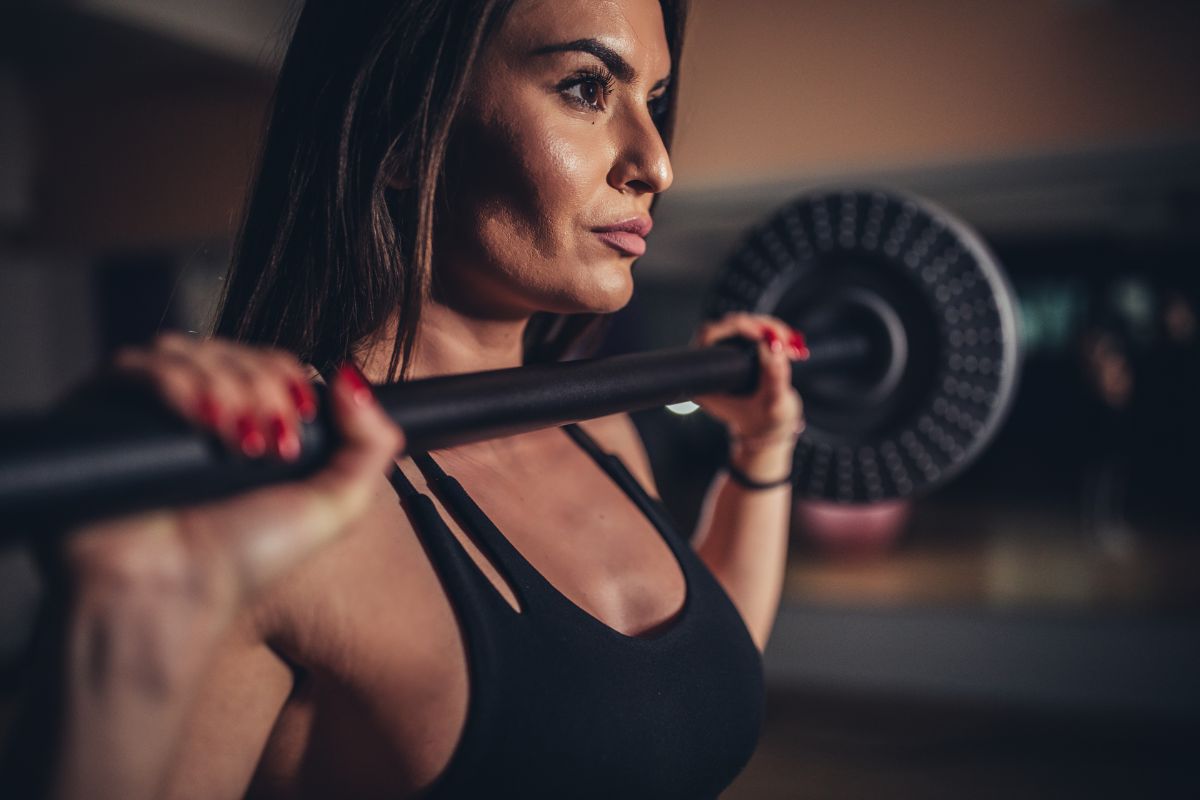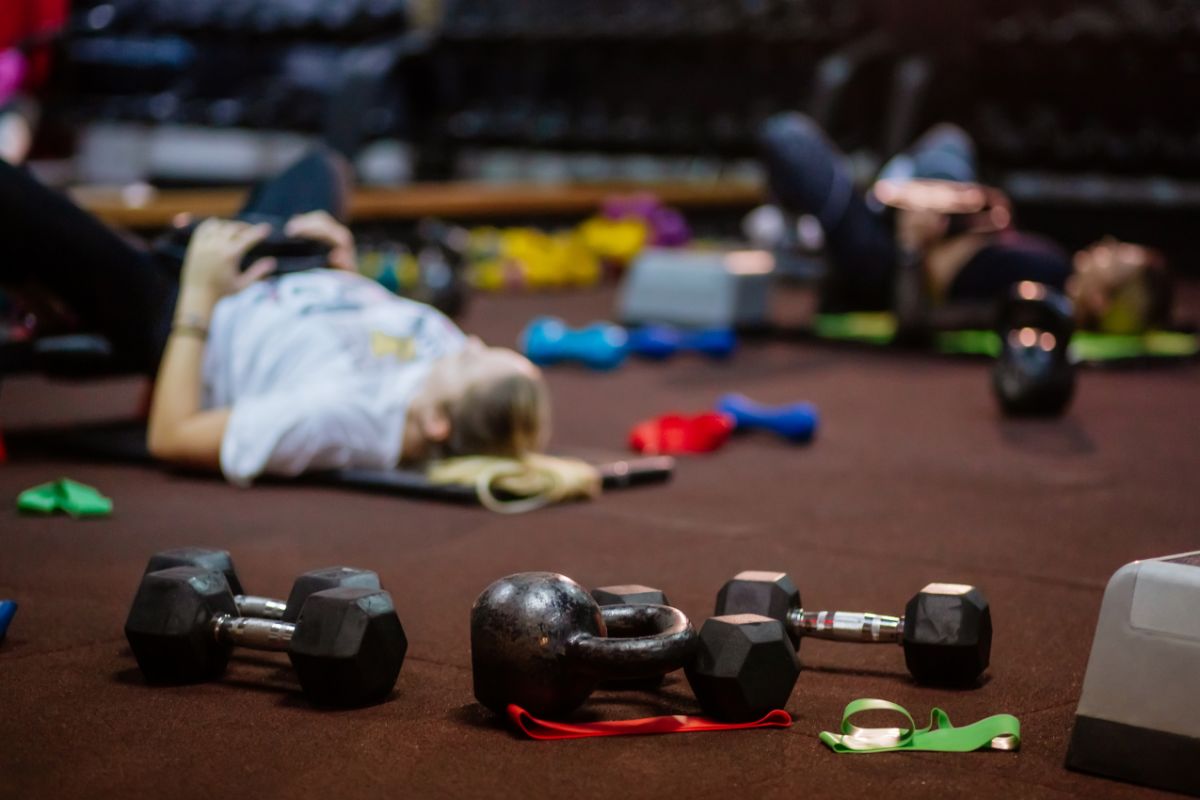Last Updated on September 13, 2022 by TJ Daniels, Certified Personal Trainer
There are many different reasons why people begin strength training, whether you simply want to gain some muscle mass and become stronger, or perhaps you’re trying to get a more toned, fitter-looking body. Both of these, and more, are achievable through strength training.
Strength training can help you build stronger, leaner muscles and also helps to strengthen your bones and joints, all while keeping your metabolism at a healthy level, which helps you burn calories even when you’re resting.


Even if you have never done any form of strength training before, it’s not too late to start!
Anyone, young or old, can benefit from strength training, so don’t be afraid to give it a try.
This guide will help you begin your journey into strength training, and will provide you with advice on what weights to pick when you start!
Before You Start
Before you start weight training, there are some things you should consider.
First, if you’re a complete beginner, it might be worth getting the help of an experienced trainer or someone with a lot of experience in the area in general so you can learn the proper form and technique required to ensure that you don’t injure yourself.
Before you start to begin any lifting, it’s best that you warm up appropriately. Nothing strenuous is required, simply 5-10 minutes of aerobic activity will help to increase the blood flow in your body, and more importantly, increase blood flow to your muscles.
Picking Weights
As a novice or beginner, picking which weights to use can be an extremely daunting task, with so much variety in size and shape, and the dreaded task of having to figure out what weight you should be lifting!
For your strength training journey to be a success, it’s important to know the differences between the types of weights you might encounter and how to figure out what sort of weight you should be lifting to begin with. Once you get these basic topics addressed, you can figure out what is going to be best for you and your workout regime moving forward.
Dumbbells
Dumbbells are probably the most common type of weight and are extremely versatile as they can be used in a wide variety of exercises!
There are many great aspects to dumbbells: they’re easy to use, safe for beginners, and if you’re not at a gym, then they’re usually the cheapest weights you can buy, too.
They also have a few disadvantages. Perhaps the biggest disadvantage is that it can become easy to become accustomed to the weight of the dumbbell quite quickly, which means you’ll have to upgrade to a heavier weight to ensure that you’re working your muscles properly.
Overall, using dumbbells is great for beginners and novices alike due to their ease of use.
Additionally, they’re especially good for those looking to build muscle mass, as dumbbell exercises tend to be more static, which puts a greater workload on the targeted muscle versus the entire body.
Kettlebells
Kettlebells are often used for more high-speed and dynamic movements and are common in gyms and in sports equipment retailers. They tend to generally be more favorable for cardio-based exercises than other weights, but you can use them however you wish.
Some of the features that make the kettlebell so great are that it can be held either one-handed or two-handed, the handles are often designed to prevent any calluses from forming, and there is a wide range of movements and exercises you can use them for.


Kettlebells are slightly less suited for beginners, so they are something you should aim to work up to, and not use right away. Furthermore, they do tend to cost more than your typical dumbbell.
Using kettlebells is best reserved for those trying to cut fat in order to gain muscle mass, and they require you to use a wide range of motion, which is particularly helpful when trying to build your strength and endurance up.
Barbell
A barbell is probably one of the most recognizable types of weight and is often what people think of first when thinking about strength training. They tend to consist of a metal bar, with weights either fixed or able to be placed onto the ends.
They’re safe to use as long as you understand the proper form required, and because the weight is balanced across the barbell, you don’t have to worry about any imbalance in your muscles.
If your barbell lets you change the weight, it also means that you can adjust the weight to your needs, which makes them suitable for beginners and also perfect for when you are ready to add more weight to your exercises as you progress.
One of the downsides is that barbells don’t have a lot of variation in movements or exercises and can also be expensive. This is why you see most people using dumbbells at home but barbells at the gym.
Barbells are excellent at helping you create great definition in your muscles, as well as generally helping you to gain more muscle mass.
Mastering barbells is one of the key steps in your strength training journey, so you should consider learning how to use them.
How Heavy Should You Go?
After you’ve picked what type of weights you’re going to be using, which ideally should be a combination of 2 or more to ensure a comprehensive workout, the next step is to decide upon how heavy the weights you’re going to use should be.
As a beginner, it’s important that you don’t rush in and try to pick up the heaviest weights in the gym. Instead, start slow and work your way up only after you have mastered your form.
If you’re using a dumbbell, there is an easy test to figure out how heavy your weights should be.
Have a weight in both of your hands, close to your hips with your palms facing forward.
Pin your shoulders against a wall, and without moving your upper arms, curl both of the weights until they’re roughly at shoulder level and then return to the starting position.
You should aim for 12 to 16 reps with proper form.
If you can’t do 12 reps, then use a lighter weight. However, if you can easily manage to complete the 16 reps, then you should use a heavier weight.
Things to Consider
Remember, when lifting weights you should always ensure that you have warmed up and stretched adequately prior to lifting anything, otherwise you put yourself at risk of serious injury.
Additionally, remember that strength training is more like a marathon than a sprint! Don’t try and rush yourself, instead, take your time, and before you know it you’ll be noticing your gains and adding more weight and different exercises to your routine.
Conclusion
In conclusion, there is a lot of thought and effort that goes into picking weights for the first time for someone who is beginning their strength training journey.
You have to consider what sort of weight you want to be using, which depends entirely on what sort of exercises and training you want to do, as well as the heaviness of the weight itself.
Hopefully, with this guide, you will find picking weights much easier. Enjoy your journey!
- How To Start HIIT Workouts [Beginner’s Guide] - May 18, 2023
- How To Sneak A Workout In While Taking Care Of Your Baby - March 17, 2023
- How To Build Your Chest With Dumbbells [Guide] - February 9, 2023








